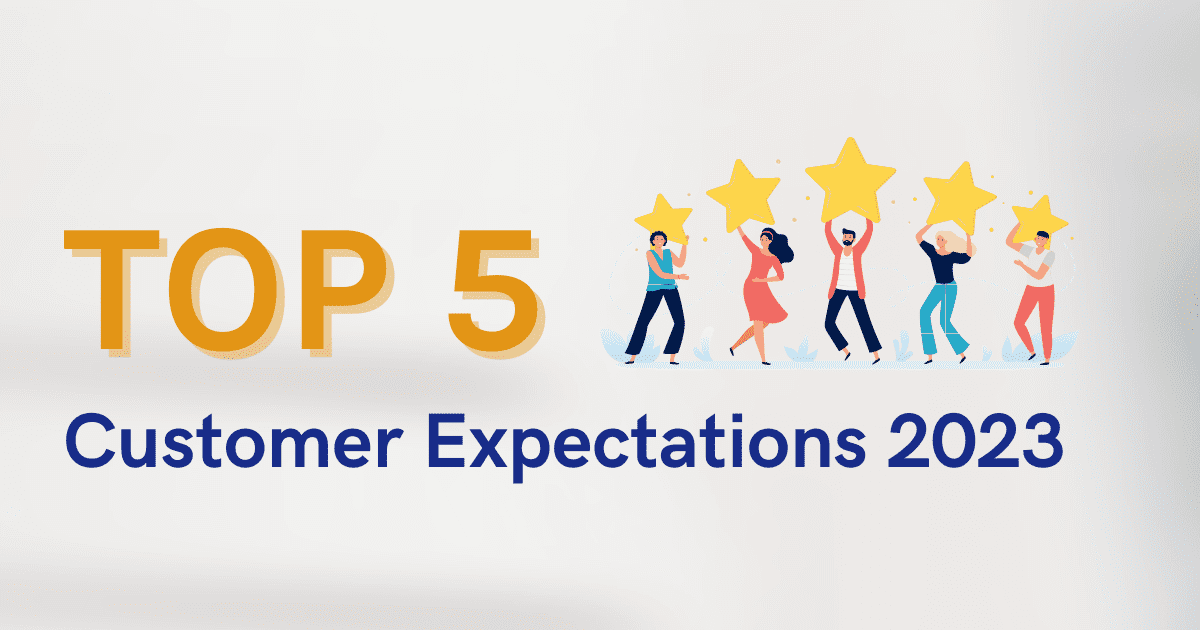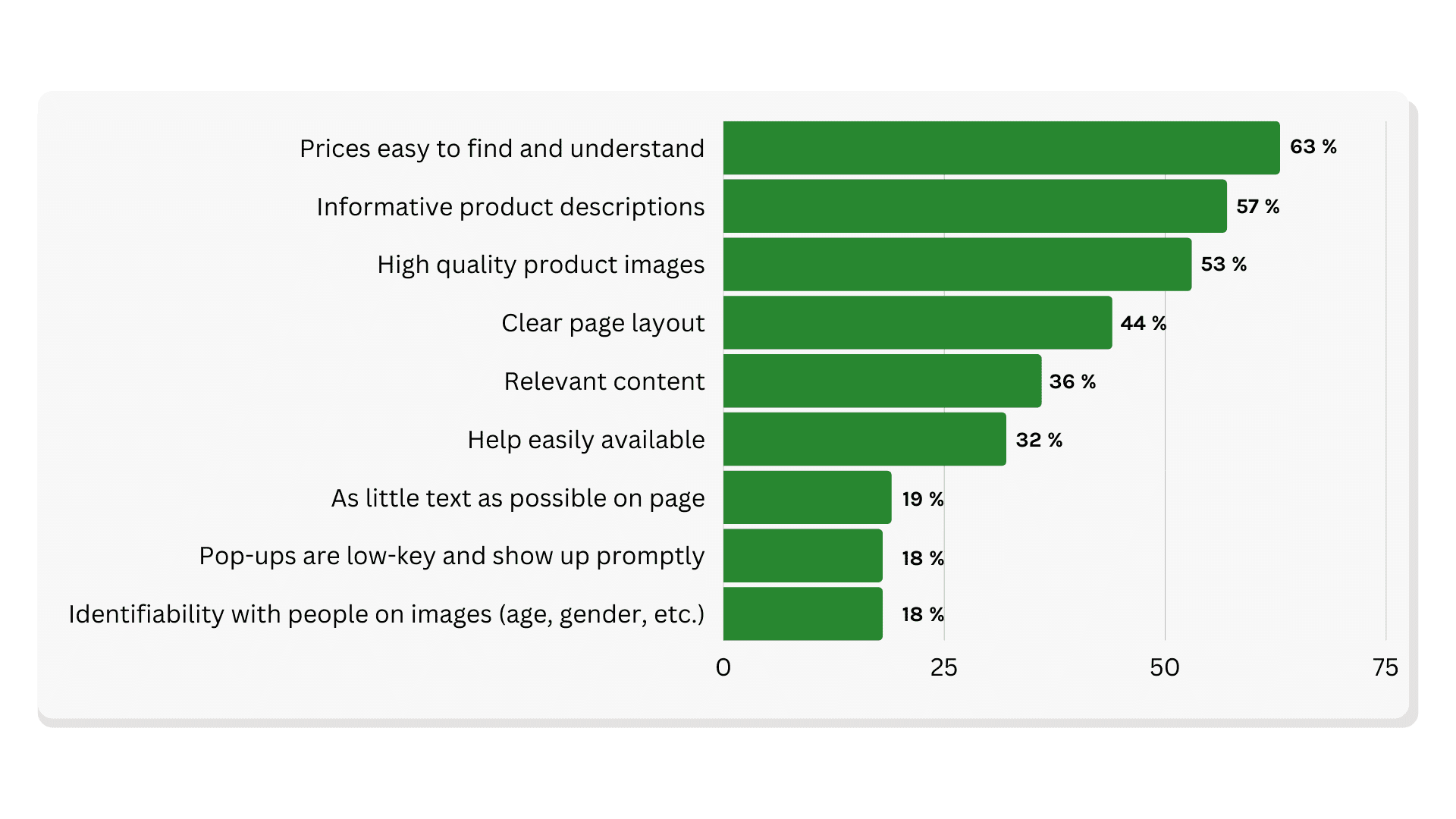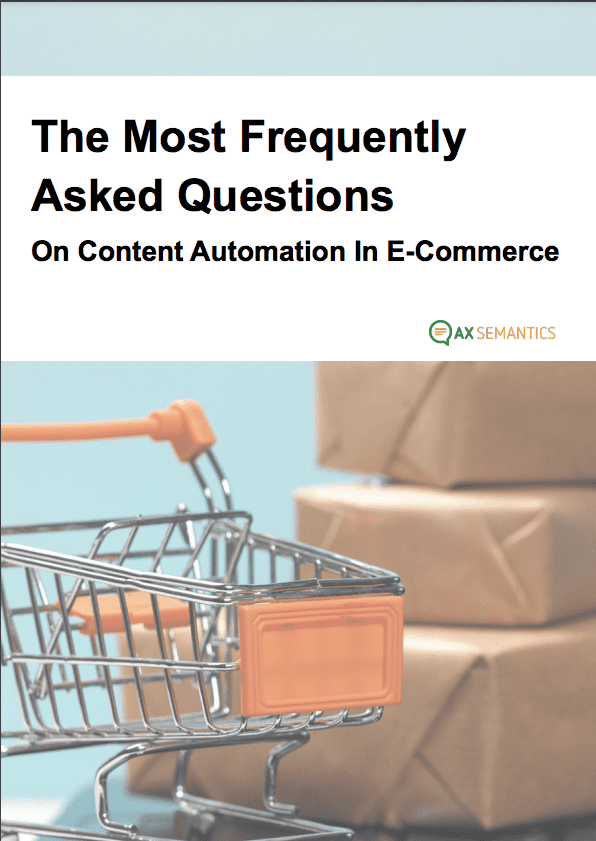Top 5 Customer Expectation Trends 2023: How They Affect Online Retailing
Reading Time 8 mins | September 22, 2022 | Written by: Anne Geyer

One man's joy is another man's sorrow: Lockdown and other factors have led to e-commerce overtaking retail in many places within the last couple of years. Customers nowadays have different expectations of online retailing than they had before the pandemic.
But what does this mean for e-commerce companies in the long term? How do they provide customers with an even better shopping experience? Let's take a look at the top 5 trends in customer expectations, including Adobe's Consumer Research Report 2022.
Customer expectations of online retailing are increasing
Plenty of studies point the way to the future of shopping and what customers expect from retailers.
Many companies have already recognized that customer experience (CX) is more important today than ever before. If customers have a positive shopping experience in a company’s online store, 75% of them are willing to spend more on that company's products.
| Definition customer expectations: The term customer expectation refers to what customers want and need from a product or service. Customer expectation is very subjective, as every customer has different needs in relation to a product. (Source: Wikipedia) |
Customers' expectations of the optimal shopping experience have changed significantly during the last few years. This change in expectations ultimately sets the trends in e-commerce.
Top 5 trends of customers’ expectation of e-commerce
In the past, online shopping expectations were mainly a matter of high service quality and attractive pricing. But today, the demands are much higher. The most important aspects include:
- Online is more important than offline
- Outstanding product information
- Personalized shopping experiences
- Channel networking
- Speed and quality
Let’s have a closer look at each of these aspects.
1. Online is more important than offline
After the severe pandemic years, stores have reopened almost everywhere without restrictions. Despite this, according to the Adobe Consumer Research Report, the number of online purchases did not decrease in 2022 compared to 2021. The main reasons for this are the simplicity and convenience as well as the time saved when shopping online.

According to Adobe, the online shopping experience at a retailer affects the overall image of that company more than the in-store shopping experience for 56% of customers. Customers have specific expectations of retailers: a wide product selection and clear product information with high-quality images, easy payment options, as well as fast delivery are some important points. To be successful in online sales, retailers must offer a unique customer experience from the first to the last contact.
2. Outstanding product information
Visitors will only become customers if they are able to find all necessary information clear and concise. If the store offers user-friendly navigation and answers the relevant questions with e. g. the help of FAQs the chance of the customer converting increases.
What is most important to customers regarding website content? In response to this question, in the Adobe study, 63% said that easy-to-find and understandable prices are most important. Informative product descriptions directly follow in second place with 57% of mentions.

Consequently, a smooth customer journey requires good, meaningful and correct product descriptions. It is particularly important that the customer receives all information about the product or service - and that it is clear and easy to find. If customers have to go through the hassle of finding all the information, they are more likely to give up. Then, they will switch to another store where they can find all the information they need quickly and easily.
Regardless of whether the customer ends up buying online or in a retail store – first of all, they usually obtain detailed information about their potential purchases on the Internet. Detailed product information, which includes not only clearly visible prices and high-quality images but also informative and substantial product descriptions, is therefore essential for a sustainable product detail page.
Automated text generation
In a store with thousands of articles, it is a huge challenge and associated with immense costs to create all the necessary product descriptions manually. The constant updating or seasonal tweaking of the texts eventually becomes a farce.
This is no longer a problem, thanks to the possibility to create automated product descriptions using software, which saves time and money. Every store operator who has product data can use automatic text generation on his own and without any programming knowledge – in the form of a software-as-a-service.

Open questions around automated content generation?
Download our free white paper that answers frequently asked questions around content automation and the AX software.
3. Personalized shopping experiences
Personalization is a broad term and includes, for example, personalized emails, targeted push notifications, or product recommendations based on previous purchasing behavior.
- According to the Adobe report, 38% of customers want to be shown only products that are relevant to them and
- 27% of cart abandoners do end up buying the product when they receive a personal purchase recommendation via email.
- 61% of Millennials are willing to share personal data in exchange for a personalized shopping experience.
- 75% of customers said that they generally expect personalization when making a purchase.
The dichotomy between expected personalization and the desire not to reveal personal data is a bigger issue here. This is exactly what AX Semantics has addressed in the development of its personalization solution.
Personalized texts
There are lots of e-commerce personalization tools. AX Semantics in particular deals with the automated and personalized creation of product descriptions. Personalized product pages address customer interests individually and generate more conversions. AX Semantics' E-commerce Suite uses real-time user data to generate individually targeted purchase incentives for each visitor, whether a regular customer or a first-time visitor.
Due to the exclusive collection of first-party cookies and the fact that no data is passed on, the user remains absolutely anonymous, but receives personalized texts customized to him. The case study of METAV Werkzeuge GmbH shows how automated and personalized texts have a positive effect on the success of a company.
Personalization in all its facets brings multiple benefits for both the customer and the retailer and supports a smooth customer journey. In order to satisfy customers, it is enormously important to offer a seamless shopping experience across all channels.
4. Channel networking
“Mobile first" is no longer just a trend but a given fact. Webscoot reports that in 2021, 55% of consumers are shopping mobile. In Adobe's report of 2022, this number is much higher and has risen to 78%.
Customers demand a consistent buying experience across all channels. Whether in person at the retail store, by (cell) phone, online, or social networks. Regardless of how the customer interacts with the retailer, they expect consistent communication and detailed information. If this works smoothly, retailers are rewarded with customer loyalty.
If there are problems and the sales staff does not meet the customers' requirements, buyers are prepared to switch to another store in 73% of cases. Uniform communication across channels and departments is therefore a basic requirement for customer loyalty.
5. Speed and quality
The last two points on our list of trends in customer expectations sound almost trivial: speed and quality. But there have been some changes.
Speed:
It’s no news that customers expect a fast and reliable delivery. However, the respective concrete requirements have become even more stringent.
While the delivery of ordered goods within 3-5 working days was common in the past, next-day delivery is now standard. Even same-day delivery is gaining in importance. Customers are also willing to pay more for this particular service.
Many retailers still face huge challenges in meeting this new demand for speed in shipping goods without cutting back on quality.
Quality:
Because, in addition, customers demand extremely high service quality. This has always been the case. However, the definition of service has changed.
Customers now expect service that is customized to their individual needs. With generic responses, non-personal messages, or long periods spent on hold, online retailers can quickly drive customers away.
High-quality customer service that responds individually to the buyer and can be reached via different options and channels is almost essential.
Conclusion
Overall, it is a challenge for companies to meet the multiple and heterogeneous expectations of customers. But the numbers clearly show that retailers have a competitive advantage if they manage to do just that.
Only by taking consumers' expectations seriously and by adapting their operations can businesses achieve success.
